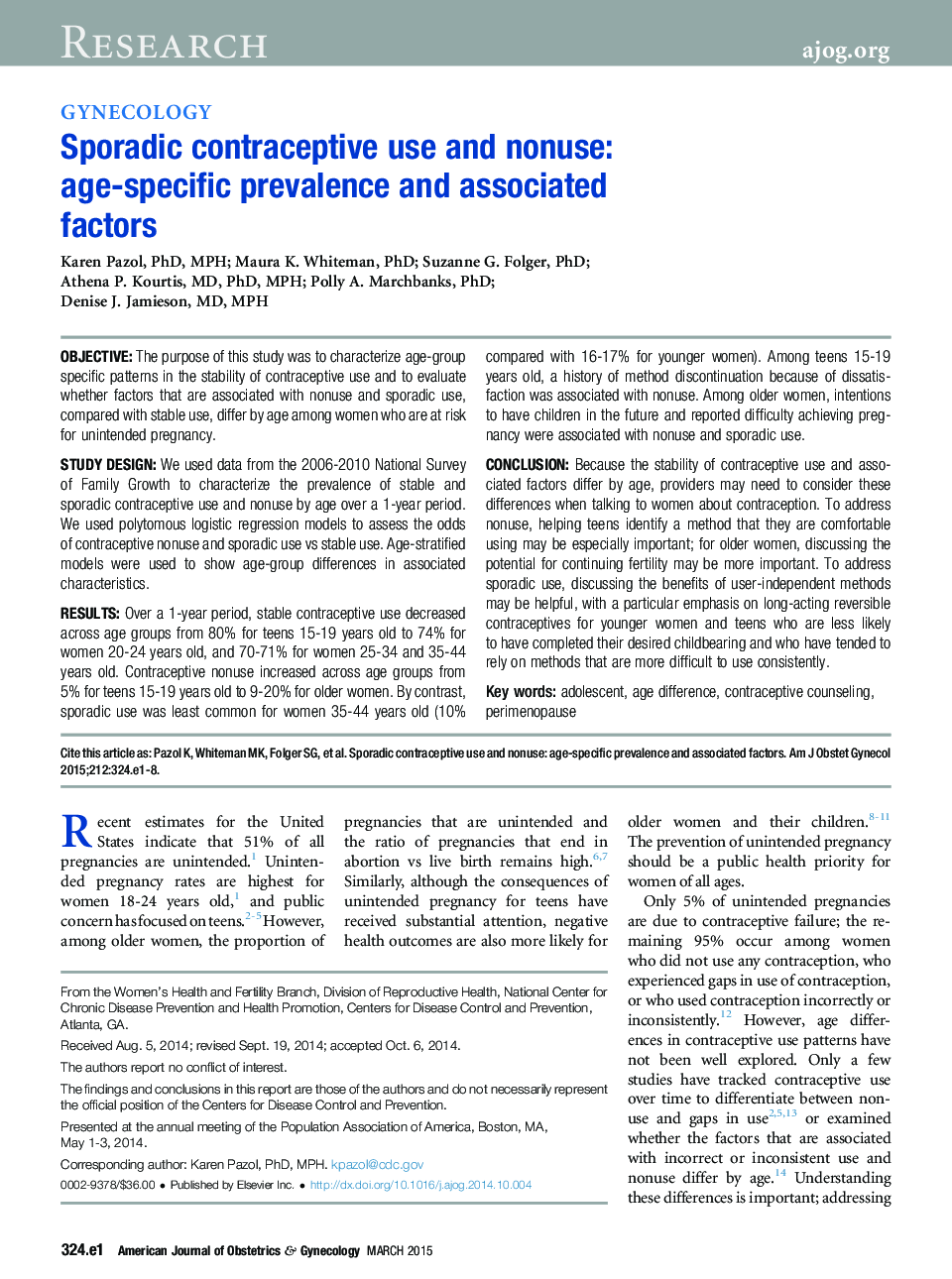| کد مقاله | کد نشریه | سال انتشار | مقاله انگلیسی | نسخه تمام متن |
|---|---|---|---|---|
| 6144331 | 1594908 | 2015 | 8 صفحه PDF | دانلود رایگان |
ObjectiveThe purpose of this study was to characterize age-group specific patterns in the stability of contraceptive use and to evaluate whether factors that are associated with nonuse and sporadic use, compared with stable use, differ by age among women who are at risk for unintended pregnancy.Study DesignWe used data from the 2006-2010 National Survey of Family Growth to characterize the prevalence of stable and sporadic contraceptive use and nonuse by age over a 1-year period. We used polytomous logistic regression models to assess the odds of contraceptive nonuse and sporadic use vs stable use. Age-stratified models were used to show age-group differences in associated characteristics.ResultsOver a 1-year period, stable contraceptive use decreased across age groups from 80% for teens 15-19 years old to 74% for women 20-24 years old, and 70-71% for women 25-34 and 35-44 years old. Contraceptive nonuse increased across age groups from 5% for teens 15-19 years old to 9-20% for older women. By contrast, sporadic use was least common for women 35-44 years old (10% compared with 16-17% for younger women). Among teens 15-19 years old, a history of method discontinuation because of dissatisfaction was associated with nonuse. Among older women, intentions to have children in the future and reported difficulty achieving pregnancy were associated with nonuse and sporadic use.ConclusionBecause the stability of contraceptive use and associated factors differ by age, providers may need to consider these differences when talking to women about contraception. To address nonuse, helping teens identify a method that they are comfortable using may be especially important; for older women, discussing the potential for continuing fertility may be more important. To address sporadic use, discussing the benefits of user-independent methods may be helpful, with a particular emphasis on long-acting reversible contraceptives for younger women and teens who are less likely to have completed their desired childbearing and who have tended to rely on methods that are more difficult to use consistently.
Journal: American Journal of Obstetrics and Gynecology - Volume 212, Issue 3, March 2015, Pages 324.e1-324.e8
